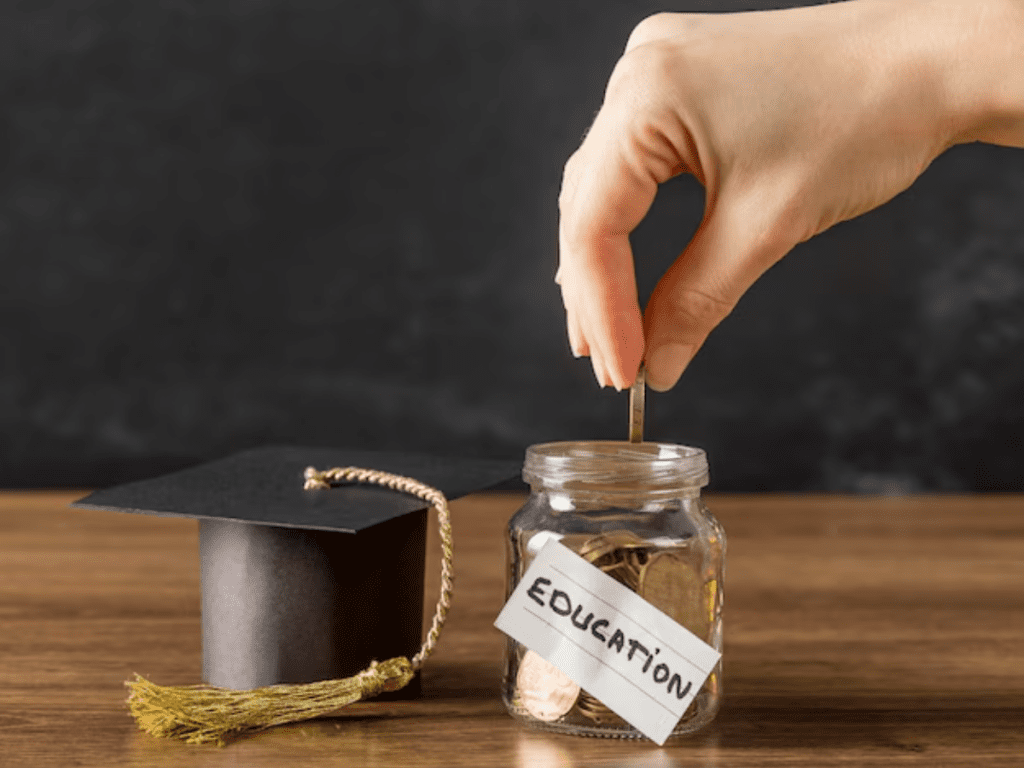Introduction
Higher education has become increasingly expensive, and many students take out loans to cover tuition, living expenses, and other educational costs. However, repaying these loans can be challenging, especially for graduates entering public service fields, lower-paying professions, or struggling with financial hardships. Loan forgiveness programs offer relief by reducing or eliminating outstanding student loan balances under specific conditions.
This detailed guide explains how student loan forgiveness programs work, the differences between types available, eligibility criteria, and the application process. It will illuminate understanding in helping borrowers make smart decisions on managing debt successfully.
How Loan Forgiveness Programs Work
The loan forgiveness plan is set out to assist student loan borrowers, enabling them to either pay less or be eligible to pay a certain percentage less on their accrued student loan following certain qualifications met. This, in general, applies to a variety of “federal” student loans types such as Direct Loans, Perkins Loans, and also some FFEL (Federal Family Education Loan) loans. Generally:
- Service-Based Forgiveness: Borrowers who work in public service, education, healthcare, or military are eligible for forgiveness after a set number of years. – Income-Driven Forgiveness: A borrower on an income-driven repayment (IDR) plan will have the remaining balance forgiven after making consistent payments for 20-25 years.
- Debt Elimination or Portion Forgiveness: The borrower may have a portion of the loan forgiven or is relieved of their debt completely by the program.
The majority of forgiveness programs need the borrower to continue to make their scheduled repayment, remain qualified in their jobs, and make required paperwork as part of its program requirements.
Types of Loan Forgiveness Programs
Several loan forgiveness programs cater to different professionals, repayment structures, and financial situations. Below are the major programs available:
1. Public Service Loan Forgiveness (PSLF)
The Public Service Loan Forgiveness (PSLF) Program is one of the most popular and beneficial loan forgiveness programs for individuals working in public service. Under PSLF:
- Borrowers must work full-time (30+ hours per week) for a qualifying employer, such as:
- Government organizations (federal, state, local, or tribal)
- 501(c)(3) nonprofit organizations
- Certain other nonprofits that provide qualifying public services
- They must make 120 qualifying payments under an income-driven repayment (IDR) plan.
- Once these conditions are met, the balance of the loan is completely forgiven, tax-free.
Who Qualifies?
Teachers
- Nurses
- Police officers
- Firefighters
- Social workers
- Other public service professionals
- Employees of nonprofit hospitals
- Employees of legal aid organizations
- Employees of public schools
- Military personnel
Key Considerations
Only Direct Loans qualify. FFEL and Perkins Loans must be consolidated.
- Payments must be made under a qualifying repayment plan (such as IDR).
-Borrowers should apply annually with the Employment Certification Form (ECF) to prove progress.
2. Income-Driven Repayment (IDR) Forgiveness
Borrowers with student loan debt significantly exceeding their income can take advantage of Income-Driven Repayment (IDR) programs, which result in forgiveness after 20-25 years of payments. The primary plans in this category are:
- Income-Based Repayment (IBR)
- Monthly payment: 10-15% of discretionary income
- Loan forgiveness after 20-25 years
- Pay As You Earn (PAYE)
- Monthly payment: 10% of discretionary income
- Loan forgiveness after 20 years
- Revised Pay As You Earn (REPAYE)
- Monthly payment: 10% of discretionary income
- Loan forgiveness after 20 years (undergraduate loans) or 25 years (graduate loans)
- Income-Contingent Repayment (ICR)
- Monthly payment: 20% of discretionary income or fixed 12-year plan
- Loan forgiveness after 25 years
Tax Implications: Under current laws, forgiven balances under IDR plans are taxable, meaning borrowers may owe income tax on the forgiven amount.
3. Teacher Loan Forgiveness Program
Teachers working in low-income schools or educational service agencies may qualify for up to $17,500 in forgiveness on their Direct and FFEL Loans.
Eligibility Requirements
- Must teach full time for five continuous years in a school that qualifies for low income.
- They must be an a highly qualified mathematics, science teacher or special educator To qualify for as much as the $17,500. However, other education professionals can seek forgiveness of as much as $5,000.
-Loans used **through the end of the five teaching service years - Teachers in STEM fields (Science, Technology, Engineering, and Math) and special education teachers are eligible for the highest forgiveness levels.
- Teachers who also qualify for PSLF may combine both programs but must apply separately.
4. Perkins Loan Cancellation
Borrowers with Federal Perkins Loans qualify for 100% loan cancellation after working in qualifying professions for a specified number of years. Unlike PSLF, forgiveness is gradual over five years, with percentages canceled annually. Eligible Professions Teachers in low-income schools Nurses and medical technicians Law enforcement officers Military service members Public defenders
Since the Perkins Loan program has closed, only existing Perkins Loan borrowers may apply.
5. Military and Government Service Loan Forgiveness
The U.S. military offers several loan repayment programs for its members. Some of the most well-known include:
- Army Loan Repayment Program (LRP) – Repays up to $65,000 to eligible soldiers.
- Navy Student Loan Repayment Program – Covers up to $65,000 for sailors in certain positions.
- National Guard Student Loan Repayment Program (SLRP) – Provides up to $50,000 for enlisted soldiers.
Service members may also qualify for PSLF, making these programs even more beneficial.
Alternatives to Loan Forgiveness Programs
For borrowers who do not qualify for loan forgiveness, there are other options to manage student debt effectively.
1. Student Loan Refinancing
Refinancing enables borrowers to consolidate multiple loans into one with a lower interest rate, which may reduce monthly payments. However, federal loans become private if refinanced, and borrowers lose federal forgiveness and repayment options.
2. Employer Student Loan Repayment Assistance
Some employers offer student loan repayment benefits as part of the compensation package.
Employers may contribute a fixed amount every month towards the student loan balance.
Under federal law, employer payments of up to $5,250 per year are tax-free for employees.
3. Federal Loan Consolidation
- Borrowers with multiple federal loans can consolidate them into a Direct Consolidation Loan. This simplifies payments and can even make loans eligible for PSLF if they weren’t previously.
4. Temporary Relief Programs
Deferment and forbearance allow borrowers to pause payments during financial hardship, though interest may continue to accrue.
- There is deferment for economic hardship and deferment for unemployment for those whose income is not stable.
Student Loan Forgiveness Latest Updates
Student loan policies change often with the government and legislature. Some of the most recent changes regarding student loan forgiveness are as follows:
1. PSLF Limited Waiver (2021-2022)
- In 2021, the U.S. Department of Education established a temporary waiver that counts previously ineligible PSLF payments toward forgiveness.
- Borrowers who made payments under wrong repayment plans or non-Direct Loans could correct their status.
2. Fresh Start Program (2023)
- The Fresh Start initiative assists those who defaulted on federal student loans to regain good standing and be re-eligible for PSLF and other programs.
3. Student Debt Cancellation Efforts under the Biden Administration
- Attempted to cancel up to $10,000-$20,000 in federal student loans for qualified borrowers was prevented by the U.S. Supreme Court in 2023.
- On the other hand, the administration has established targeted forgiveness programs for public service workers and IDR borrowers.
4. SAVE Repayment Plan (2024)
- The Saving on a Valuable Education (SAVE) Plan replaces the REPAYE plan and provides: –
- Lower monthly payments for low-income borrowers
- Total loan erasure in as few as 10 years for those with small loan balances – Safety from exploding interest charges
State-Based Loan Forgiveness Programs
Beyond federal loan forgiveness programs, many U.S. states offer state-based forgiveness programs for professionals in certain fields.
1. State-Based Teacher Loan Forgiveness
- Most states offer extra forgiveness for educators serving in needier areas.
- For example, New York’s Teacher Loan Forgiveness Program offers up to $20,000 in forgiveness for participating teachers.
2. Health and Medical Loan Forgiveness
- States have medical loan repayment programs for healthcare providers, including physicians, nurses, and other practicing clinicians and care givers serving in rural or underserved areas.
- Example: The California State Loan Repayment Program (SLRP) has up to $50,000 available in repayment support for health workers.
3. Law School Loan Repayment Assistance Programs (LRAPs)
- Several states and law schools have programs that provide for loan repayment assistance of public interest attorneys.
- Example: The Florida Bar Foundation helps attorneys practicing at legal aid offices.
Check out state-specific loan forgiveness programs by visiting the NASFAA website or your state’s education department.
International Loan Forgiveness Programs
Most student loan forgiveness programs are for the United States, but other countries have similar programs to help borrowers deal with education debt.
1. Canada’s Repayment Assistance Plan (RAP)
-Canada offers debt forgiveness for graduates working in public service, healthcare, and education for areas that lack a sufficient supply of these workers. –
Canada Student Loan Forgiveness Program for Family Doctors and Nurses forgives up to $40,000 in student loans.
2. United Kingdom’s Student Loan Write-Off
- Student loans in the UK are automatically cancelled after 30 years (Plan 2 loans) or 40 years (Plan 4 loans) if the debt has not been fully repaid.
3. Australia’s Higher Education Loan Program (HELP) Forgiveness
- Australia also has a system for cancellation of all or part of the student loan debt in cases where health professionals work in remote or rural areas under the HELP Loan Forgiveness Program.
Conclusion: Moving Towards Loan Forgiveness in the Right Direction
For most student loan borrowers, loan forgiveness programs are an opportunity to come out of student debt with reduced financial burdens. However, knowing your eligibility criteria, staying within the compliance line, and then submitting the proper paperwork determines whether you avail of these facilities or not.

